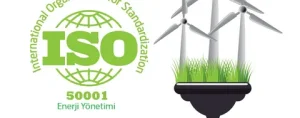Business industrial
A Beginner’s Guide to Small Business Financing

In today’s rapidly evolving business landscape, aspiring entrepreneurs often find themselves at the crossroads of turning their dreams into reality. Starting a small business can be a thrilling adventure, but it often hinges on securing the right financial resources. In this beginner’s guide to small business financing, we will explore various avenues to fund your entrepreneurial journey and make informed decisions.
I. Self-Financing: Your Seed Capital
Before exploring external funding options, it’s crucial to examine your own financial resources. Personal savings, investments, or assets can serve as your initial seed capital. This approach allows you to maintain complete control over your business and minimize debt. However, it may require discipline and patience as your business grows.
II. Friends and Family: Borrowing from Your Inner Circle

Photo by Pixabay: https://www.pexels.com/photo/grey-metal-case-of-hundred-dollar-bills-164652/
Another common source of small business financing is reaching out to friends and family for loans or investments. While this can be a more flexible and less bureaucratic option, it also carries personal and relational risks. It’s vital to establish clear terms and expectations to avoid misunderstandings.
III. Small Business Loans: Banks and Lenders
Traditional financial institutions like banks offer various loan options tailored for small businesses. These loans often have competitive interest rates and longer repayment terms. However, securing a bank loan can be challenging due to stringent requirements, especially for startups.
IV. Online Lenders: A Digital Lifeline
In recent years, the rise of online lenders has provided entrepreneurs with alternative funding sources. Companies like LendingClub, Kabbage, and OnDeck offer fast and accessible financing options, although they often come with higher interest rates. Conduct thorough research and compare terms before committing.
V. Crowdfunding: The Power of the Crowd
Crowdfunding platforms like Kickstarter and Indiegogo have revolutionized small business financing. They allow entrepreneurs to showcase their ideas to a broad audience and gather funds from supporters in exchange for rewards or equity. This method not only raises capital but also validates your business concept.
VI. Angel Investors: Seeking Experienced Backers
Angel investors are affluent individuals who provide capital to startups in exchange for equity. Beyond financial support, they often offer valuable guidance, industry connections, and mentorship. Finding the right angel investor can be a game-changer for your small business.
VII. Venture Capital: Scaling Up with Investor Support
For high-growth startups with ambitious goals, venture capital might be the answer. Venture capitalists (VCs) invest in companies with significant growth potential. However, this path often involves giving up a substantial portion of equity and adhering to their strategic vision.
VIII. Government Grants and Programs
Many governments offer grants, loans, and support programs to stimulate small business growth and innovation. These resources can vary widely by location and industry, so it’s essential to research what’s available in your area.
IX. Microloans and Community Development Financial Institutions (CDFIs)
Microloans, typically offered by CDFIs, are small loans designed to assist underserved communities and businesses. They often have more lenient eligibility requirements and can provide critical support to entrepreneurs in need.
X. Bootstrapping: The Slow and Steady Approach
Lastly, consider bootstrapping, which means growing your business organically without external funding. While this method may take longer to reach significant scale, it allows you to retain complete ownership and financial independence.
In conclusion, there’s no one-size-fits-all solution for small business financing. Each option has its pros and cons, and the best choice depends on your unique circumstances, goals, and risk tolerance. Remember to conduct thorough research, seek professional advice when necessary, and never underestimate the power of a well-thought-out business plan. With determination and the right financial strategy, your entrepreneurial journey can thrive.
Business
Manufacturing Models: OEM, ODM, and Contract Manufacturing

In the dynamic world of manufacturing, three production models frequently come up for discussion: Original Equipment Manufacturing (OEM), Original Design Manufacturing (ODM), and contract manufacturing.
While these terms may appear interchangeable, each represents a distinct approach to production, ownership, risk, and long-term brand value. Understanding the differences between these models is crucial for businesses as they navigate their growth, protect intellectual property, and manage complex supply chains.

The Significance of Production Models Today
As market demands evolve rapidly, with shrinking product lifecycles and rising customer expectations for quality and consistency, the choice of production model takes on greater importance. The model you adopt influences everything from pricing strategies to the speed of innovation.
OEM: Mastering Design Ownership
Original Equipment Manufacturing comes into play when a brand has a clear vision of what it wants to produce. This includes detailed product concepts, technical drawings, material specifications, and performance standards—all laid out by the brand itself. The actual manufacturing is entrusted to a specialized partner, equipped with the resources and expertise to turn that vision into reality.
This model suits businesses that view design and engineering as core competencies. Industries such as automotive, industrial equipment, and high-end homeware typically operate under an OEM framework. In this scenario, the manufacturer’s role is primarily execution—tooling, fabrication, assembly, and quality control—without influencing the product’s identity.
Long-term relationships characterize OEM partnerships. Once a manufacturer is embedded within a brand’s production ecosystem, changing partners becomes a complex and costly endeavor. This commitment pays off with consistent quality control, especially critical for products requiring high precision or strict compliance.
However, with this control comes responsibility. If issues arise in the market, accountability primarily falls on the brand’s design decisions, not on manufacturing errors. OEM works best when internal teams are confident in their engineering capabilities and market insights.
ODM: Efficiency and Speed
Original Design Manufacturing shifts the paradigm by allowing manufacturers to offer ready-made or semi-custom designs. Brands can select and modify these products rather than starting from scratch. This approach is ideal for companies that prioritize speed to market, as it significantly reduces the time and resources required for product development.
Commonly used in consumer electronics, small appliances, and private-label products, the ODM model facilitates quicker market entry. The heavy lifting—industrial design, prototyping, and material selection—has already been handled by the manufacturer.
While ODM offers the advantage of speed, it can compromise exclusivity. The same core design might be available in various markets with only minor cosmetic differences. For brands looking for differentiation through storytelling or pricing rather than technical novelty, this trade-off is frequently manageable.
Control in ODM is shared but not fully relinquished. Reliable ODM partners provide avenues for modifications and customization, yet the primary intellectual property usually remains with the manufacturer. This reality can impact long-term strategies, particularly if a product line becomes a significant revenue source.
Contract Manufacturing: Flexibility Without Ownership
Contract manufacturing is another distinct model where the brand retains complete ownership of design and intellectual property. In this case, the manufacturer focuses solely on production tasks, which can also encompass procurement, assembly, and logistics.
This model is prevalent in sectors like pharmaceuticals, fast-moving consumer goods (FMCG), electronics assembly, and food processing. It serves well for companies looking for manufacturing flexibility without investing heavily in facilities, labor, or equipment.
Unlike OEM, contract manufacturing doesn’t involve collaborative design. Instead, manufacturers strictly follow the brand’s specifications, often under confidentiality agreements and compliance protocols. This relationship can be either short-term or seasonal, depending on demand.
The chief advantage here is scalability. Production can increase or decrease in response to market demands without incurring fixed overhead costs. However, coordination becomes essential; any changes in design require careful communication to avoid delays or inconsistencies.
Evaluating Control, Cost, and Complexity
At a strategic level, the critical differences between these models revolve around three main areas: control, cost structure, and operational complexity.
- Control: OEM provides maximum control over product design but requires more substantial investments in internal design and validation processes. ODM lowers development efforts but may limit exclusivity. Contract manufacturing reduces capital risks while increasing reliance on thorough documentation and process adherence.
- Cost Structure: Cost comparisons can be complex. While ODM might seem more affordable upfront, margins can dwindle without differentiation. OEM may yield greater long-term value if production volumes justify initial investments. Although contract manufacturing appears cost-effective for variable demand, it can result in higher per-unit expenses as scale increases.
- Complexity: Each model brings its own complexities. OEM relationships necessitate extensive technical collaboration; ODM partnerships require trust regarding design ownership, while contract manufacturing relies on precise process management and quality assurance.
Choosing the Right Model for Your Business
Early-stage brands often lean towards ODM or contract manufacturing due to limited resources and the urgency for market entry. As products gain traction, many businesses reevaluate their approaches and shift towards OEM models to regain control.
Established organizations often utilize a mix of these models across their product lines. Flagship products may follow OEM pathways, whereas accessories or seasonal items might leverage ODM or contract partnerships. This hybrid approach balances the need for innovation with operational efficiency.
Industry context is also a crucial factor in model selection. Regulated sectors often favor OEM or tightly controlled contract manufacturing to adhere to compliance standards, while lifestyle and consumer goods brands may gravitate towards ODM for its flexibility and speed.
The Indian Manufacturing Landscape
In India, the significance of these models has increased as the push for domestic manufacturing gains momentum. Improving technical capabilities have bolstered Indian OEM partners across sectors like stainless steel, mobility components, and industrial equipment.
Indian manufacturers now frequently offer hybrid OEM-plus capabilities—combining engineering support and material innovation without fully entering the ODM territory. This middle-ground approach appeals to global brands seeking both reliability and cost efficiency while retaining design ownership.
Contract manufacturing has also matured in India, aided by improvements in compliance systems and export-oriented infrastructure. For international brands, this evolution presents opportunities for scalable production with reduced risks.
Long-Term Implications of Your Production Model Choice
The production model you choose today will influence your options in the future. It can affect supply chain resilience, negotiation power, and even how your brand is perceived in the market. While customers may never see the production facility, they will certainly feel the impact of your choices in product consistency and performance.
Shifts between these models are feasible, but rarely straightforward. Transitioning from ODM to OEM involves rebuilding design capabilities, while moving from contract manufacturing to OEM requires tighter technical integration. These shifts should be strategic, not merely reactive responses to market pressures.
Making the Choice with Clarity
No single production model is superior in every situation. The right choice aligns with your business’s maturity, market aspirations, and internal strengths. Successful companies view production models as strategic frameworks rather than mere procurement choices.
Clear understanding of ownership, accountability, and long-term objectives prevents costly misalignments. Whether you’re partnering for design execution, acceleration, or pure production capacity, the most fruitful relationships are grounded in transparency and shared expectations.
In manufacturing, the seemingly quiet decisions often yield the loudest consequences. OEM, ODM, and contract manufacturing are not just operational methods; they reflect how a business envisions its future. Understanding and carefully selecting among these models can empower companies to thrive in an increasingly competitive landscape.
Business industrial
ISO 50001 Certification in Kuwait: A Pathway to Enhanced Energy

As global energy costs rise and sustainability becomes a strategic priority, organizations across sectors are turning to ISO 50001 to build robust energy management systems.
The standard provides a framework that helps companies improve energy efficiency, cut waste, reduce emissions, and achieve long-term operational excellence. Businesses pursuing ISO 50001 Certification in Kuwait are increasingly recognizing the tangible value it delivers.

The following real-world inspired success stories—presented without using any company names—highlight how organizations in manufacturing, hospitality, oil & gas, logistics, and public services have transformed their energy performance after adopting ISO 50001.
These examples also demonstrate how engaging ISO 50001 Consultants in Kuwait, preparing for an ISO 50001 Audit in Kuwait, and understanding ISO 50001 Cost in Kuwait can contribute to significant energy savings and measurable environmental improvement.
1. Manufacturing Plant Achieves Major Energy Savings Through Systematic Monitoring
A medium-sized manufacturing plant producing industrial components faced rising energy costs due to outdated equipment and inefficient processes.
Leadership realized that improving energy performance was critical to staying competitive, so the organization initiated ISO 50001 in Kuwait to redesign its energy management practices.
Challenges
- High energy consumption during peak production
- Lack of real-time energy monitoring
- Inefficient compressor usage
- No formal energy baseline for comparison
With guidance from experienced ISO 50001 Consultants in Kuwait, the plant conducted a detailed energy review, installed smart meters, and implemented better scheduling for energy-intensive operations.
Measurable Improvements
- 18% reduction in total energy consumption within the first year
- Significant cost savings due to optimized compressor operations
- Reduced maintenance downtime
- Creation of a continual improvement culture
The plant reported that although the ISO 50001 Cost in Kuwait required budgeting for new meters and staff training, the investment paid for itself within months through energy savings.
2. Hotel Chain Improves Guest Experience While Reducing Utility Bills
A large hotel chain operating multiple properties was struggling with high electricity and water bills. With increasing pressure to adopt sustainable tourism practices, the organization chose to implement ISO 50001 Certification in Kuwait to streamline energy use.
Initiatives Implemented
- LED lighting upgrades across all guest rooms and public areas
- Smart HVAC controls and motion sensors
- Training staff on energy-efficient housekeeping practices
- Introducing guest-awareness campaigns about energy use
Results Achieved
- 25% reduction in annual electricity consumption
- Improved indoor temperature stability and guest comfort
- Enhanced brand reputation for sustainability
- Lower operational expenses and improved profit margins
During the ISO 50001 Audit in Kuwait, auditors acknowledged the hotel’s strong commitment to continuous improvement, particularly in controlling HVAC losses during peak seasons.
3. Oil and Gas Facility Lowers Emissions via ISO 50001 Framework
Action Steps
- Conducted a comprehensive energy gap assessment
- Optimized boiler operations and heat recovery systems
- Introduced KPIs for energy performance
- Engaged multiple departments in the energy-management program
Positive Outcomes
- 14% reduction in fuel consumption within the first 18 months
- Lower greenhouse gas emissions
- Better monitoring of critical equipment
- Stronger compliance with national energy regulations
Despite the initially higher ISO 50001 Cost in Kuwait for technical improvements, the facility achieved significant long-term cost avoidance by preventing energy waste.
4. Logistics and Distribution Center Improves Operational Efficiency
A logistics firm operating warehouses across Kuwait dealt with rising energy expenses due to long working hours, outdated forklifts, and inefficient lighting. Implementing ISO 50001 Certification in Kuwait helped reshape operations across all facilities.
Changes Introduced
- Replacing old forklifts with energy-efficient electric models
- Installing daylight-sensitive LED systems
- Optimizing warehouse layout to reduce equipment travel distance
- Regular energy-performance meetings with team leaders
Impact
- 20% reduction in warehouse electricity consumption
- Reduced carbon footprint
- Faster warehouse operations due to layout improvements
- Higher employee awareness of energy reduction goals
The organization noted that the ISO 50001 Audit in Kuwait encouraged better tracking of forklift efficiency, resulting in reduced energy costs per shipment.
5. Government Facility Enhances Sustainability and Reduces Waste
A large government building sought to align with national sustainability goals by pursuing ISO 50001 in Kuwait. Public facilities often operate for long hours, making energy optimization crucial.
Implementation Strategy
- Integrating smart building-management systems
- Upgrading outdated chillers with high-efficiency models
- Creating dashboards for real-time energy tracking
- Involving employees through training and awareness drives
Key Benefits
- 30% reduction in annual energy bills
- Enhanced indoor air quality
- Strengthened public image as a sustainability leader
- Reduction in operational inefficiencies
The cost of the project was initially high, but government incentives helped offset part of the ISO 50001 Cost in Kuwait, making it easier to implement.
Conclusion
These real-world inspired examples demonstrate that ISO 50001 is more than just a certification—it is a practical pathway to measurable energy improvement.
Whether in manufacturing, hospitality, logistics, oil & gas, or public services, organizations adopting ISO 50001 Certification in Kuwait consistently report lower energy costs, stronger environmental performance, and improved operational efficiency.
With the support of knowledgeable ISO 50001 Consultants in Kuwait, thorough planning for ISO 50001 Audit in Kuwait, and clear understanding of ISO 50001 Cost in Kuwait, businesses can unlock long-term savings and build a sustainable future.
Business industrial
Differentiating Shared Services vs. BPO: What Businesses Need to Know

Introduction
As companies grow, so do their operational demands. Managing finance, HR, IT, customer service, and administrative tasks becomes more complex and costly. To operate more efficiently, organizations often explore support models like Shared Services and Business Process Outsourcing (BPO).
These two models might seem similar, but they serve different purposes—and choosing the right one can significantly impact a company’s costs, productivity, and long-term growth. In this blog, we break down the key differences between shared services vs. BPO, helping your business make the right decision. Companies around the world rely on trusted outsourcing partners like SixEleven BPO to improve efficiency while lowering operational costs.
What Are Shared Services?
A shared services model centralizes internal business functions within the company. Instead of each department or branch handling tasks separately, a dedicated internal team supports the entire organization from one location.
For example, a corporation might establish a Shared Services Center (SSC) for:
- HR administration
- Payroll and timekeeping
- Finance and accounting
- Procurement
- IT support
- Data management
Key Characteristics of Shared Services
- Owned and operated by the company: The business manages the team, processes, and infrastructure.
- Focus on standardization: Shared services optimize workflows across departments to reduce duplication and errors.
- Internal cost-savings model: By centralizing teams, companies reduce operational expenses compared to having separate teams in each department.
- Best for large enterprises: Shared services are ideal for organizations with high-volume, repetitive processes.
Advantages of Shared Services
- More control over operations
- Standardized internal processes
- Better data governance
- Closer alignment with company culture
Limitations of Shared Services
- High setup cost
- Requires large headcount
- Limited scalability
- Still dependent on internal hiring and management
- Not ideal for small and medium enterprises (SMEs)
What Is Business Process Outsourcing (BPO)?

BPO involves hiring an external company to handle specific tasks or entire business functions. Instead of building an internal department, businesses outsource their operations to specialized service providers, often located offshore.
Popular BPO solutions include:
- Customer service & technical support
- Appointment scheduling
- Sales & lead generation
- Data entry & back-office processing
- Finance, accounting & payroll
- Content moderation
- Healthcare support
- IT helpdesk services
Organizations partner with leading outsourcing firms like SixEleven BPO to reduce costs, access trained talent, and ensure 24/7 efficiency.
Key Characteristics of BPO
- Operated by an external provider: The outsourcing company is responsible for hiring, training, and managing the team.
- Flexible and scalable: Businesses can scale up or down quickly depending on demand.
- Cost-efficient: Offshore outsourcing can save companies 60–70% in labor and operational costs.
- Focus on quality and expertise: BPO providers specialize in the tasks they support, offering higher efficiency and performance.
Advantages of BPO
- Lower operational costs
- Access to global talent
- 24/7 support availability
- Fast deployment and team expansion
- No infrastructure or HR burden
- Professional management and better productivity
Limitations of BPO
- Requires communication alignment
- Needs clear documentation and expectations
- Cultural differences (minimal when outsourcing to the Philippines)
Shared Services vs. BPO: Key Differences
1. Ownership and Control
- Shared Services: Operated internally.
- BPO: Outsourced to a third-party provider.
2. Cost Structure
- Shared Services: Lower cost than multiple in-house teams but still expensive to maintain.
- BPO: Highest cost savings—offshore outsourcing reduces expenses by up to 70%.
3. Scalability
- Shared Services: Limited, depends on internal hiring and budget.
- BPO: Highly scalable with fast team expansion.
4. Expertise
- Shared Services: Generalized, company-trained teams.
- BPO: Specialized teams with industry-specific experience.
5. Setup Requirements
- Shared Services: Requires office space, technology, HR, and management.
- BPO: No setup needed provider already has teams, systems, and infrastructure.
6. Best Suited For
- Shared Services: Multinational enterprises with high-volume internal processes.
- BPO: Businesses of all sizes, especially those seeking cost savings and efficiency.
Which Model Is Right for Your Business?
Both models offer strong benefits, but the best choice depends on your business goals, budget, and long-term plans.
Choose Shared Services If:
- You want full internal control
- You’re a large enterprise with extensive internal processes
- Budget is not a major concern
- You want to standardize internal workflows
Choose BPO If:
- You want to drastically reduce costs
- You need fast scalability
- You want to free your internal team from time-consuming tasks
- You need trained professionals instantly
- You require 24/7 support
- You want to focus on core business growth
Why Many Companies Prefer BPO Today
Modern businesses prioritize flexibility, speed, and cost-effectiveness—areas where outsourcing excels. BPO providers like SixEleven BPO deliver trained teams, industry expertise, and customized workflows without the heavy investment required for shared services.
Companies benefit from:
- Lower labor costs
- Ready-to-go trained teams
- Faster delivery times
- Improved customer satisfaction
- Stronger operational performance
For many organizations, outsourcing is not just a cost-saving decision—it is a strategic advantage.
Challenges and Considerations
1. Shared Services Challenges
- High initial investment in infrastructure and staff
- Limited flexibility compared to outsourcing
- Dependence on internal resources for technology and expertise
2. BPO Challenges
- Less direct control over processes
- Potential communication and cultural barriers in offshore BPO
- Risk of data security and compliance issues
- Dependence on service-level agreements for quality assurance
Factors Businesses Should Consider When Choosing Between Shared Services and BPO
- Core vs. Non-Core Activities: Identify which functions are essential to your business strategy. Core functions may benefit more from shared services, while non-core functions may be suitable for BPO.
- Cost vs. Long-Term Investment: Evaluate whether your organization can afford the initial investment for shared services or if immediate cost savings through BPO are more strategic.
- Control Requirements: Determine the level of control your organization needs over processes. Shared services provide more control, while BPO involves reliance on external providers.
- Scalability Needs: If rapid growth or seasonal fluctuations are expected, BPO offers more scalable solutions.
- Expertise and Technology Access: Consider whether your organization has the internal expertise and technology to manage processes efficiently or if an external provider can deliver better results.
- Risk and Compliance: Evaluate operational, legal, and security risks associated with outsourcing versus maintaining an internal shared services model.
Conclusion
Understanding the differences between shared services and BPO is essential for businesses aiming to improve efficiency, reduce costs, and enhance overall operations. Shared services provide centralized, internally managed processes with long-term control and consistency, while BPO offers flexibility, access to specialized expertise, and potential cost savings through external providers. Businesses should assess their core activities, scalability needs, control preferences, and risk tolerance before making a decision. By carefully considering these factors, organizations can select the right model to drive efficiency, support growth, and achieve strategic goals.
Final Thoughts
Shared services and BPO both play important roles in business operations, but they serve different needs. Shared services focus on internal centralization, while BPO offers external expertise, scalability, and significant cost savings.
Companies looking for efficiency, flexibility, and rapid growth often choose outsourcing partners like SixEleven BPO to handle customer service, back-office, sales, and support tasks. With the right outsourcing strategy, businesses can enhance performance, reduce costs, and stay competitive in today’s fast-changing marketplace.
More: Establish your brand effortlessly with LgoConnects virtual office BGC offering premium business identity without long-term rent or overhead expenses.
-
Business2 years ago
Cybersecurity Consulting Company SequelNet Provides Critical IT Support Services to Medical Billing Firm, Medical Optimum
-
Business2 years ago
Team Communication Software Transforms Operations at Finance Innovate
-
Business3 years ago
Project Management Tool Transforms Long Island Business
-
Business2 years ago
How Alleviate Poverty Utilized IPPBX’s All-in-One Solution to Transform Lives in New York City
-
health3 years ago
Breast Cancer: The Imperative Role of Mammograms in Screening and Early Detection
-
Sports3 years ago
Unstoppable Collaboration: D.C.’s Citi Open and Silicon Valley Classic Unite to Propel Women’s Tennis to New Heights
-
Art /Entertainment3 years ago
Embracing Renewal: Sizdabedar Celebrations Unite Iranians in New York’s Eisenhower Park
-
Finance3 years ago
The Benefits of Starting a Side Hustle for Financial Freedom































